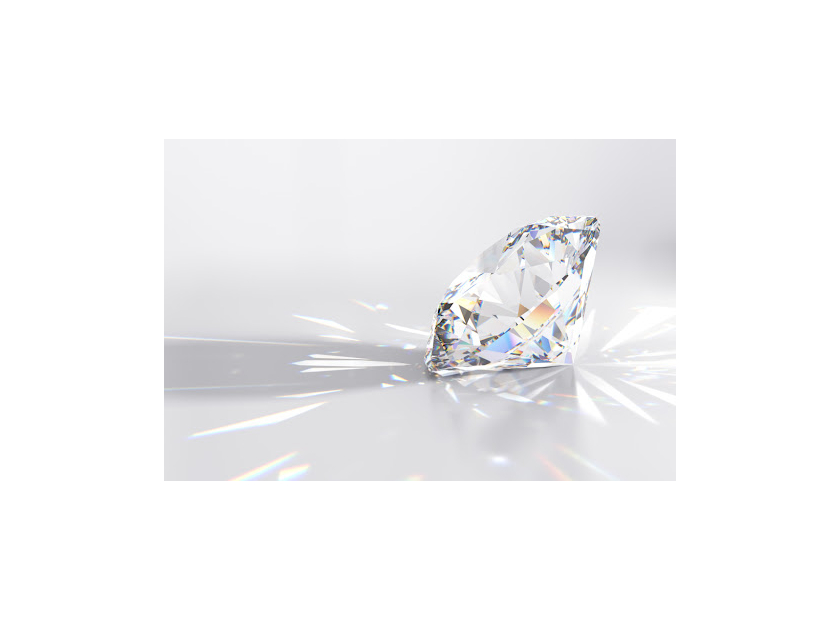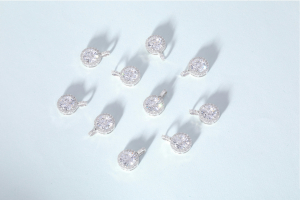USD
/
USD
/
Shipping to:
Currency:
Diamonds have long been cherished for their beauty, rarity, and the unique qualities they bring to jewelry. Whether it’s the brilliance of a diamond engagement ring or the timeless elegance of diamond earrings, these precious stones hold a special place in our hearts. However, the diamond industry has experienced a significant shift with the introduction of lab-grown diamonds, offering a compelling alternative to natural diamonds. Understanding the distinctions between these two types of diamonds is crucial for anyone considering a purchase.
Environmental and Ethical Considerations
One of the strongest arguments in favor of lab-grown diamonds is their reduced environmental impact. Traditional diamond mining is often associated with significant environmental disruption, including deforestation, soil erosion, and ecosystem destruction. Lab-grown diamonds, on the other hand, require far fewer natural resources and have a smaller carbon footprint. The controlled environment in which lab-grown diamonds are created allows for better management of energy consumption and emissions.
From an ethical standpoint, lab-grown diamonds offer an appealing alternative, especially for those concerned about the human rights issues often linked with diamond mining. The term 'conflict diamonds' or 'blood diamonds' refers to diamonds mined in war zones and sold to finance armed conflict. While the industry has made progress in ensuring the traceability and ethical sourcing of natural diamonds, lab-grown diamonds eliminate the risk of inadvertently purchasing a stone that has contributed to human suffering.
Scientific and Technological Advances
The creation of lab-grown diamonds showcases the remarkable advances in science and technology. By replicating the conditions under which natural diamonds form deep within the Earth’s mantle, scientists have developed methods to grow diamonds in a laboratory setting. Two primary methods are used: High Pressure High Temperature (HPHT) and Chemical Vapor Deposition (CVD). Both processes involve sophisticated machinery and carefully controlled environments to produce diamonds that are virtually identical to their natural counterparts in terms of chemical composition and physical properties.
These technological advances have not only made lab-grown diamonds more accessible to consumers but have also enabled the production of diamonds that can be customized for specific purposes. For instance, lab-grown diamonds can be engineered to exhibit certain colors or clarity, offering a level of customization that is not possible with natural diamonds.
Economic Impact
The emergence of lab-grown diamonds has also influenced the economics of the diamond market. Lab-grown diamonds are generally less expensive than natural diamonds, largely due to the differences in the production process. This price difference makes lab-grown diamonds an attractive option for consumers seeking quality and value. Moreover, as the technology for creating lab-grown diamonds continues to improve and become more efficient, it’s likely that their cost will decrease further, making them even more competitive in the market.
On the other hand, the rise of lab-grown diamonds has prompted the natural diamond industry to re-evaluate its strategies. Some argue that natural diamonds hold a unique value due to their rarity and the millions of years it takes for them to form. This intrinsic value is something that lab-grown diamonds, despite their many advantages, cannot replicate.
FAQs
What exactly are lab-grown diamonds?
Lab-grown diamonds are diamonds that are created in a laboratory environment using advanced technological processes. These diamonds are chemically, physically, and optically identical to natural diamonds, which are formed over millions of years in the Earth’s mantle. The key difference lies in the origin: lab-grown diamonds are made in a matter of weeks, while natural diamonds take billions of years to form.
Are lab-grown diamonds real diamonds?
Yes, lab-grown diamonds are real diamonds. They have the same chemical composition and crystal structure as natural diamonds. The International Gemological Institute (IGI) and the Gemological Institute of America (GIA) both grade lab-grown diamonds according to the same criteria used for natural diamonds, including the 4 Cs: cut, color, clarity, and carat weight.
How can I tell the difference between a lab-grown diamond and a natural diamond?
To the naked eye, lab-grown diamonds are indistinguishable from natural diamonds. Even professional jewelers may require specialized equipment to identify them. Lab-grown diamonds, however, are often inscribed with a microscopic mark that denotes their origin, which can be seen under magnification. This inscription is typically made by the laboratory that produces the diamond and is invisible to the naked eye.
Are lab-grown diamonds as durable as natural diamonds?
Lab-grown diamonds are just as durable as natural diamonds. Both types score a 10 on the Mohs scale of hardness, making them the hardest known material on Earth. This means they are extremely resistant to scratches and can endure daily wear for a lifetime.
Do lab-grown diamonds retain their value?
Lab-grown diamonds typically have a lower resale value compared to natural diamonds. This is primarily because natural diamonds are rare, and their value is partly derived from this rarity. However, as the demand for sustainable and ethical products continues to grow, the perception and value of lab-grown diamonds may change over time.
Are lab-grown diamonds eco-friendly?
Lab-grown diamonds are generally considered to be more eco-friendly than natural diamonds, as their production has a significantly lower environmental impact. They do not require mining, which can lead to deforestation, soil erosion, and other forms of environmental degradation. Additionally, lab-grown diamonds are often produced using renewable energy sources, further reducing their carbon footprint.
Can lab-grown diamonds be customized?
Yes, lab-grown diamonds can be customized more easily than natural diamonds. Because they are created in a controlled environment, it is possible to tailor specific characteristics, such as size, color, and clarity, according to personal preferences. This level of customization allows for the creation of unique, bespoke pieces of jewelry that may not be achievable with natural diamonds.









